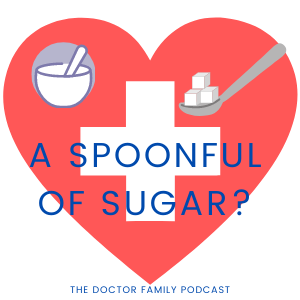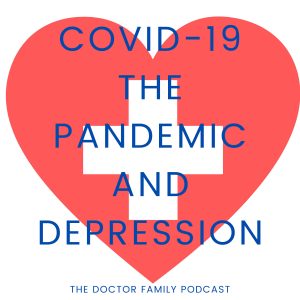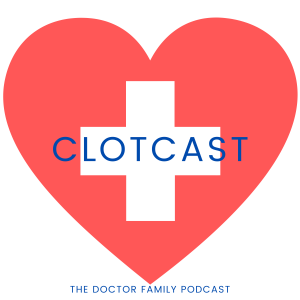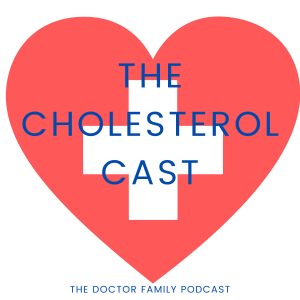How to swallow tablets?
Unlike in Mary Poppins, medicine doesn’t always taste nice! None the less medicine only works when it is taken! In this episode we explore how medicines are taken by mouth, why not all medicines are available as a liquid, and how to take unpleasant tasting medicines as well as tips on learning the life skill of swallowing tablets!
BMJ article: https://doi.org/10.1136/bmj.m3550
Music in the podcast is by Drew Worthly – Thanks Drew, please check out his music here
Transcript
Hello and welcome to the doctor family podcast, this week we reached a thousand listens so thanks to all of you who have taken time to listen to our podcasts.
One of our family’s favourite films is Mary Poppins, and today’s episode is inspired by my favourite song from this movie, a spoon full of sugar.
Know the one? The nanny is trying to encourage the children to tidy up the nursery by making it less of a bore by turning it into a game while singing, she later manages to get/ them to take their medicine by magically making the medicine taste good.
The song, written by the incredible Sherman brothers, was inspired by one of their children telling them about the polio vaccine they had been given, being delivered on a sugar lump, a much more appealing route than the injection they had expected.
The story of the song raises an interesting problem we face regularly in general practice, and that is how we can help our patients take the medicine they need for their health when it is often unpleasant or difficult to take.
As a GP, I often have to think about the form of a medicine I give, and it is not just for the children I treat that can be a problem.
Some people for medical reasons are unable to swallow any solids let alone tablets, all of us have to learn to swallow in our childhood, and when you think about the act of swallowing it is a fascinating and co-ordinated movement of a large number of muscles of the mouth, throat and tongue, to produce a swallowable ball of food or bolus, to move it to the back of the mouth and swallow – which we perform effortlessly for years until something like a stroke robs us of this basic power.
As we learn to eat solids, we also learn to detect things we should not be swallowing such as bits of bone or hair, so our mouths are primed to feel for things that we should not be swallowing.
Pills rarely feel normal to us so we need to relearn to swallow with tablets, often in our older childhood.
And a good many people persist in struggling with pills into adulthood. People need to learn to be able to swallow tablets.
There are a number of tricks to help us learn to swallow tablets which I will touch on later, however for the moment let us think about the alternatives, which we will often use for children or adults with inability to swallow tablets.
If I go back to my own childhood, most trips to the doctors resulted in me coming away with a bottle of yellow banana medicine. This tasted good to me and I don’t think my parents struggled to get me to take it. This illustrates that some medicines can be made to be palatable and in a liquid form that people will struggle less with swallowing as the texture is familiar to our mouths.
So if some medicines can be prepared like this why aren’t all medicines delivered as liquids as standard?
It turns out this is something of a rabbit hole,
Palatability, some medicines taste so nasty they just can’t be disguised, I can still remember a nurse working with me when I was a junior doctor in paediatrics simply laughing at me and suggested I give the child a particular medicine I had prescribed as it was in the guidelines as the correct one and recommended I give it to them in the bath as they would be very likely to spit it up. That same drug given as a tablet or capsule doesn’t taste and is very effective, sufficed to say I offered the child an alternative!
When drug companies develop drugs, they need to do a lot of testing and get licences for the drug, lots of drugs do not have a licence for a liquid version and so are not available or are available only as a special, non licensed version that the prescriber takes additional risk on prescribing -not something many prescribers take lightly
Shelf life- liquid medications often have a much shorter shelf life which would also cause issues for storage and the supply chain
Some medications are cleverly packaged to delay the release of the active ingredients to a certain part of the gut or to be released over the course of time which may me more difficult to achieve as a liquid
Volume, if you have Paracetamol, the adult dose is 2 x 500mg tablets, as a suspension this would equate to 4x a 5ml medicine spoon and that is an awful lot of sickly medicine to get down your throat up to four times a day!
The last reason I am going to mention although there are almost certainly others, is cost. Let me give you an example, a prescription for a course of the antibiotic nitrofurantoin as a tablet would cost the NHS around 4pounds, for the liquid version it can cost 525 pounds for the same course.
While not all medicines available as a liquid or tablet have such a stark difference in price, I am sure you can imagine how costs like this add up and need to be considered to help make sure the NHS resources are used wisely.
I suspect in countries without this sort of system, where the patient pays directly for their medications at cost price, this pill/liquid choice would play into patient choice as well!
There was a paper published in the BMJ recently – I will put a link to the paper in the show notes and on the shows webpage- covering this subject and in it they looked at a number of tips and tricks for getting the medicine into the patient safely and with the least discomfort, and I am going to share these tips with you now:
- Getting a child or an adult for that matter to take a nasty tasting medicine
- Try a tasty chaser to give them a reward to get the medicine down,
- If the smell is an issue, holding the nose or have a strong but pleasant smelling item under the nose to disguise it
- Try freezing the tasebuds with an ice lolly ahead of the medicine
- If you are planning to put the medicine into a food then ensure they will eat the whole thing and check with your pharmacist to check if it is ok for that medicine to be delivered with that as certain tings will prevent the medicine being absorbed properly.
Ok and now for getting those pesky pills down:
- To train yourself in this important life skill Try with smaller and simple things such as small sweets like smarties or tictacs to swallow whole
- Make sure your mouth is well lubricated and not dry
- Build up slowly in size
- The new learning for me from reading the study in the BMJ showed that Head position is important in being able to swallow.
- In their study, surprisingly having the head turned to one side made it easier to swallow pills than looking straight ahead or tilting the head back!
And, if all else fails, listen to Mary Poppins and try a spoon full of sugar!
I hope you found this podcast diverting, if you enjoyed it please listen to our others, get in touch via our website or Facebook. You can subscribe in your podcast player or sign up to our email list on the website.
Until next time, I will as ever leave you with the fabulous music of Drew Worthley Good bye



